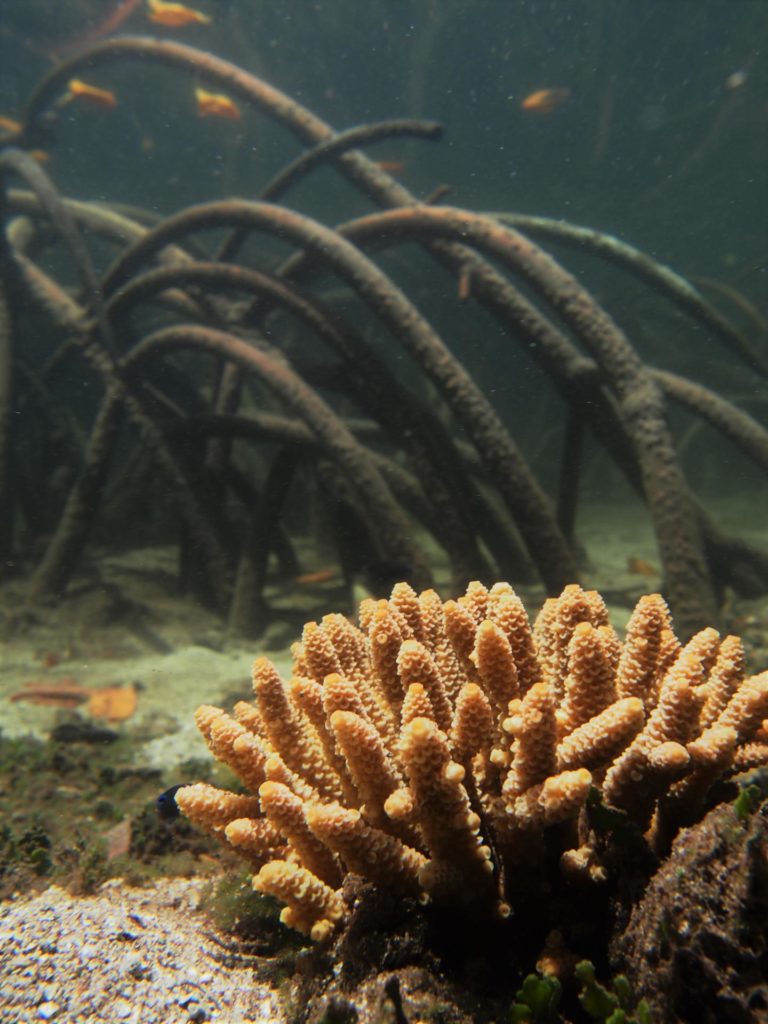The first documented discovery of “extreme corals” in mangrove lagoons around Australia’s Great Barrier Reef is yielding important information about how corals deal with environmental stress, scientists say. Thirty four species of coral were found to be regularly exposed to extreme low pH, low oxygen and highly variable temperature conditions making two mangrove lagoons on the Woody Isles and Howick Island potential “hot-spots” of coral resilience.
Although coral cover was typically low and somewhat patchy in the lagoon waters, DECRA Research Fellow Dr Emma Camp, from the University of Technology Sydney (UTS) said the discovery was important because it “provides novel information on the mechanisms that support coral resilience to stressors such as climate change and pollution.”
“This highlights the need to study environments that would usually be considered unfavourable to corals in order to understand how stress tolerance in corals works.
“There is a lot we don’t know. For example are these extreme corals already at their limit, can they survive more stress, if we transplant them to more stable environments will they maintain their stress tolerance?,” Dr Camp said.
Dr Camp is no stranger to searching for corals in unexpected places. Camp and colleagues were the first to recognise that the corals they found in the murky lagoon waters of New Caledonia could provide answers to help support coral reef survival in the face of unprecedented global coral reef bleaching events.
With the support of Wavelength Reef Charters and funding from Waitt Foundation/National Geographic the research team surveyed 250km of the northern GBR visiting eight lagoons located on five off-shore islands.
Analysis of coral samples showed that a combination of photosynthetic “strategy” (physiological plasticity) and microbial diversity supports coral survival. However with survival comes a trade-off – the corals had reduced calcification rates, meaning they are growing more slowly than their reef counterparts.
Team Leader of the UTS Climate Change Cluster Future Reefs Research Group, Associate Professor David Suggett, said the study outcomes were important “as we look for innovative ways to support coral survival into the future”.
“It’s likely these mangrove lagoon corals have the best chance to persist into the future given that they are already conditioned to the complex interaction of warmer waters, ocean acidification and deoxygenation predicted for reefs under climate change” he said.
Having just discovered these “tough” examples of one of nature’s most extraordinary symbiotic relationships the researchers say there is a need to help coral survival by giving enhanced protection to these special places on the Great Barrier Reef where corals persist into mangrove lagoons.
The researchers say that because these habitats carry previously unrecognised ecosystem service value for corals, spanning from acting as places of refuge to stress preconditioning, “this makes their protection even more important.”
###
This part of information is sourced from https://www.eurekalert.org/pub_releases/2019-08/uots-emc082619.php
Marea Martlew
61-424-735-255
[email protected]
http://www.uts.edu.au


